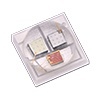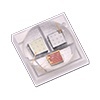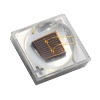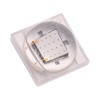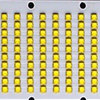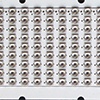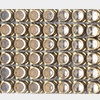Infrared led heating principle
Infrared LED heating is a non-contact heat transfer method. In the winter, for example, people baking fire heating, we are baking the fire to obtain heat at the same time, but also in the external heat is constantly emitted, the emission of air factors, but also infrared radiation factors.
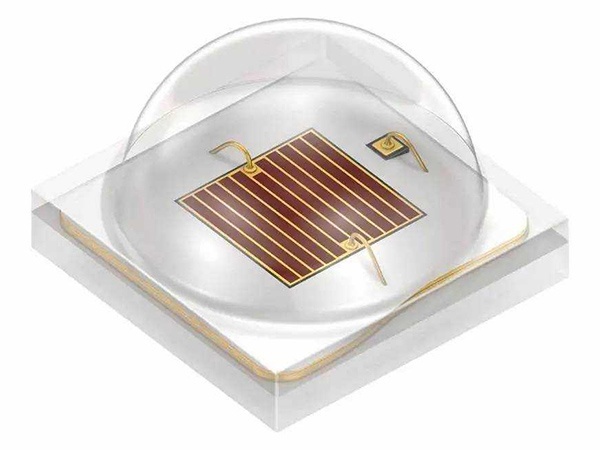
Based on physical knowledge we know that all objects with temperatures above absolute zero emit infrared rays outward, and that infrared heating is a non-contact method of heat transfer.
How to understand this statement? For example, there is a pot of hot water, a person will put his hand into the hot water, at this time the hot water will transfer heat to the person's hand through contact. If the hot water is replaced by a pot of fire at this point, the fire heats up the air, and the hot air acts as a conductor of heat through contact with the person. At the same time, the flame is also in the outward dispersion of a large number of infrared rays, so the middle distance between a piece of glass, we can feel the heat in the presence of the same.
Similar to the role of fire, LED is an emerging, through the LED infrared radiation heating method, the following explains its heating principle.
First, the generation of infrared radiation
Infrared radiation belongs to the electromagnetic radiation, is a form of energy that can propagate without a medium. According to the theory of quantum mechanics, any absolute temperature greater than 0K object will emit electromagnetic radiation. The higher the temperature of the object, the greater the intensity of radiation. Infrared radiation ranges from 0.76-1000 μm in wavelength and 300 GHz-400 THz in frequency. The longer the wavelength, the smaller the corresponding photon energy. Objects can release or absorb infrared photons through energy level changes in electron jumps, molecular vibration or rotation patterns, and keep themselves in an energy balance state.
Currently, the infrared wavelengths of LEDs are between 700-1600nm, that is, between 0.7-1.6μm, which belongs to the near-infrared wavelengths. Larger wavelengths of infrared due to technical limitations have not been realized.
Second, the propagation of infrared radiation
Infrared radiation in the form of electromagnetic wave propagation, propagation speed of light, in a vacuum and non-magnetic medium in a straight line. In the propagation process, infrared radiation will appear reflection, scattering, absorption, refraction of several characteristics. This leads to energy loss and direction change. When infrared radiation interacts with a medium, some of the photons are absorbed by the particles of the medium, while others penetrate or are reflected. The longer the wavelength, the better the penetration of the material. LED infrared therapy machines, for example, 700-850nm wavelength of infrared light usually acts on the surface of the skin, while 1500nm can penetrate the cortex down to the muscle.
Third, the absorption of infrared radiation
Infrared radiation is absorbed by the object, its energy will be converted into internal energy, so that the object molecules of vibration, rotation or electron jump mode excitation. The absorption rate of infrared radiation varies from substance to substance, depending on whether the natural vibration frequency of the molecules is the same as the frequency of the radiation. If the frequency is the same, resonant absorption will occur. Otherwise, the infrared radiation will pass through and not be absorbed. The degree of absorption is also related to the thickness, density and chemical composition of the object. This can be determined by the infrared absorption spectrum.
Fourth, infrared energy into thermal energy
Absorption of infrared radiation, the molecules inside the object in the excited state, with high internal energy. Through intermolecular collisions and energy exchange, this additional internal energy will be evenly distributed, so that the overall internal energy increases. The increase in internal energy leads to an increase in the temperature of the object, which is manifested as a thermal effect. This is the core process of infrared heating. The heat capacity of different materials affects the magnitude of the temperature rise. Dense objects have a more pronounced heating effect.
Fifth, the conduction of heat
Absorption of infrared radiation will be part of the heat conduction to the neighboring substances, heat exchange. Heat conduction along the high temperature to the direction of the low temperature conduction, until equilibrium is reached. The rate of conduction is related to the thermal conductivity of the object. A good conductor conducts heat quickly, while an insulating material conducts heat slowly. Through heat conduction, infrared heating can be throughout the target object, rather than only limited to the surface.
Six, re-radiation
Obtaining heat objects will also release infrared radiation, proportional to the temperature. Re-radiation will take away part of the heat, reducing the heating efficiency. Need to supplement sufficient external infrared source. Convection phenomenon will also take away heat, need to isolate or reduce the impact of convection. Repeated absorption and re-radiation is the key to continuous heating until thermal equilibrium is reached. In winter, for example, people baking fire heating, we are baking fire to obtain heat at the same time, but also in the non-stop external heat emission, this kind of emission has the air factor, there are also infrared radiation factors.
This article describes the heating principle of infrared led, if you want to consult our products, please contact with the service phone.

